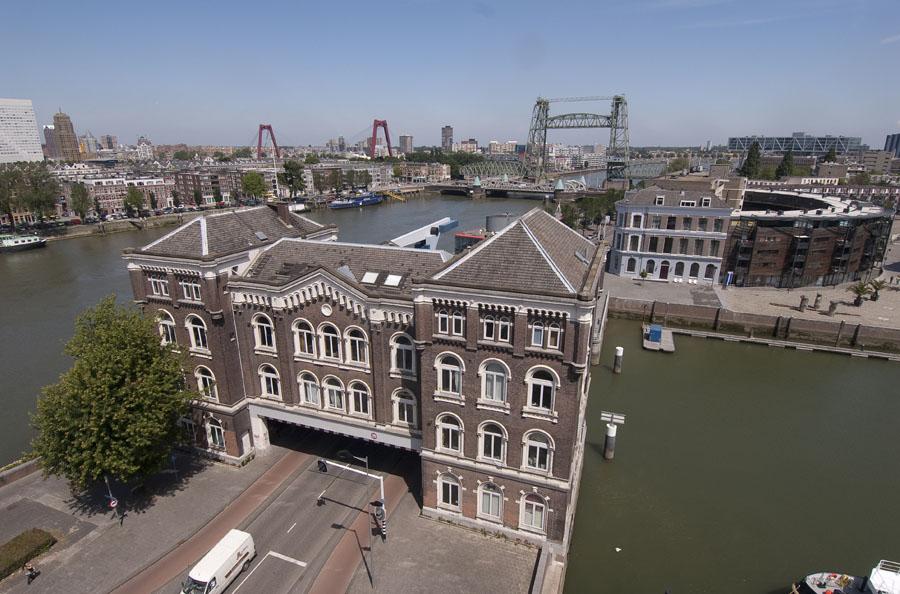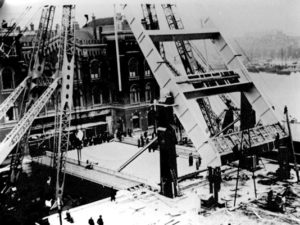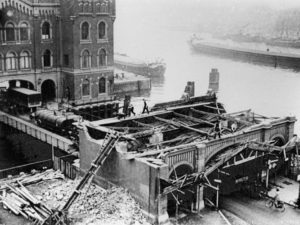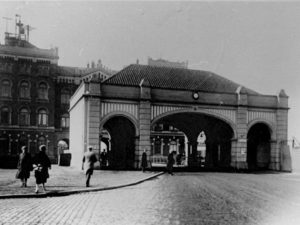“Het Poortgebouw” is the name of an extraordinary 19th century building, a national monument in Rotterdam’s Kop van Zuid district located on the south bank of the river Maas.

Intended to house the head administrative office for Rotterdamsche Handelsvereniging, the building was completed in 1879 when the founder of the RHV, Lodewijk Pincoffs, went bankrupt and fled the country to the United States. In the following 120 years, the building would be adapted to fit the needs of the various users and the everchanging surroundings. This was amongst others the Holland America Lijn, a meteorlogic station, and for the longest time the Rotterdamse Havenbedrijf. After their relocation in 1978, the abandoned house almost become an Eros Centrum, if Rotterdammers had not protested emphatically against this municipal plan.
Today, the name is equally connected to the collective of 30 inhabitants organised as members of an association (vereniging) established in 1982. 1984 marked the end of a long and bumpy road towards legalization, from an“action squat” (an organised protest against shortage of living spaces) on October 3, 1980 to the official rennovation of the place to meet the requirements of a (young) living group and the first –affordable– rent contract.
Since then, the house has not only served residental needs but has also hosted social and cultural interaction and has provided a number of public “windows” into diverse non-profit oriented activities. The Poortgebouw is a living example that experiment, open-mindedness and a do-it-yourself attitude are the real engines of (sub)culture, not exploitative materialism and exhausting lobbying with bureaucracy.
The majority of today’s international Poortgebouwers contribute to various realms of art and culture throughout Rotterdam, a creative energy which results in audible and visible productivity day and night at the Poortgebouw. Social, political and ecological consciousness underlie the overall climate. Our house “rules” are principally non-hierachical, built upon foundations of tolerance and peace, awareness of the needs of the other one and the freedom of thought and self-expression. To the “outside” the Poortgebouw has always offered an “open door” (and mind!).
Here are some old pictures of the bridge construction by the house :




